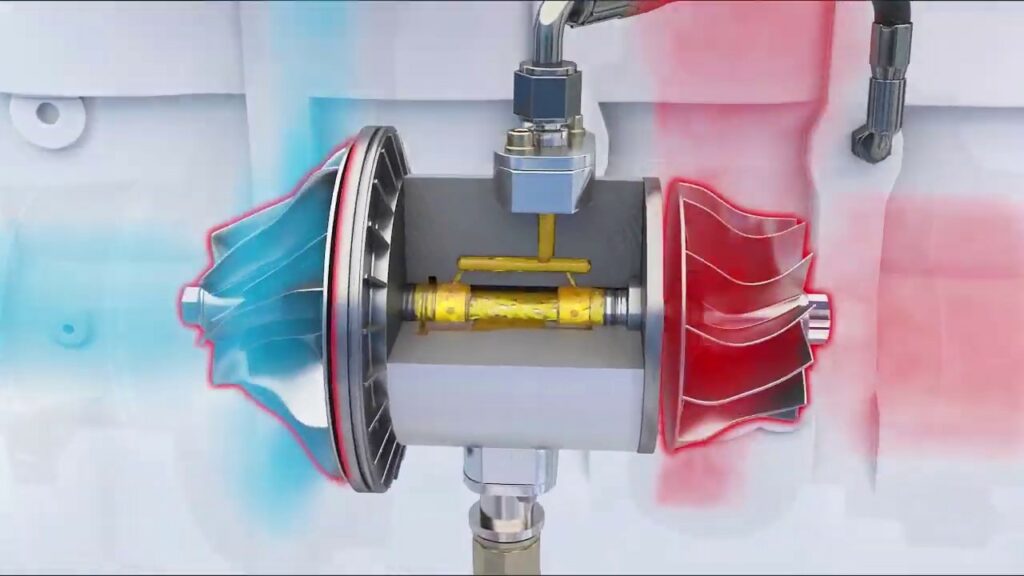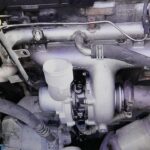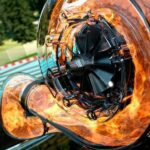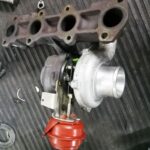
1. Understanding Turbo Problems
Common Issues with Turbochargers
When it comes to turbo problems, there are several common issues that car owners may encounter. One of the most common problems is turbo lag, which refers to the delay in power delivery when you press the accelerator. This can be frustrating, especially when you need that extra power immediately.
Another issue that many people face is turbo overheating. This occurs when the turbocharger becomes too hot, leading to a loss in performance and potential damage to the engine. It is important to understand the causes of turbo overheating and take preventive measures to avoid this problem.
Clogged or dirty air filters can also cause turbo problems. The air filter plays a crucial role in keeping dirt and debris out of the engine, and when it gets clogged, it restricts the airflow and puts additional strain on the turbocharger. Regularly checking and replacing the air filter can help prevent turbo problems.
The Importance of Regular Maintenance
Regular maintenance is vital when it comes to preventing turbo problems. This includes checking for any leaks, inspecting the hoses and pipes connected to the turbocharger, and ensuring that all components are properly lubricated. Ignoring regular maintenance can lead to more severe issues with the turbocharger.
Signs of Turbo Problems
It is essential to be aware of the signs that indicate turbo problems. Some common indicators include excessive smoke from the exhaust, a noticeable decrease in power, strange noises coming from the engine, and an illuminated check engine light. If you notice any of these signs, it is crucial to address the issue promptly to avoid further damage.
Turbocharger Upgrades and Replacements
In some cases, upgrading or replacing the turbocharger may be necessary to resolve certain turbo problems. Upgrading to a larger turbo can provide more power, while replacing a faulty turbocharger can restore the performance and efficiency of your vehicle. However, it is important to consult with a professional mechanic before making any modifications or replacements.
Conclusion
Understanding turbo problems is crucial for all car owners. By knowing the common issues, recognizing the signs, and prioritizing regular maintenance, you can keep your turbocharger in optimal condition and ensure the longevity of your vehicle’s performance. Remember to seek professional help if you encounter any significant turbo problems to avoid further damage and costly repairs.
2. Troubleshooting Turbo Boost Issues
✨ En este artículo vamos a adentrarnos en los problemas más comunes relacionados con el Turbo Boost y cómo solucionarlos. El Turbo Boost es una tecnología que permite que el procesador de tu ordenador funcione a una velocidad más alta de lo normal cuando se necesite un rendimiento adicional. Sin embargo, pueden surgir problemas que afecten el funcionamiento óptimo de esta función.
🔧 Uno de los errores más frecuentes es que el Turbo Boost no se active correctamente, lo que puede ocasionar una disminución en el rendimiento del procesador. Una posible solución es asegurarse de que la opción de Turbo Boost esté habilitada en la configuración de tu ordenador. Esto puede variar dependiendo de la marca y modelo, por lo que te recomendamos consultar el manual del dispositivo.
🔌 Otro problema común es el sobrecalentamiento del procesador debido al uso prolongado del Turbo Boost. Esto puede resultar en un rendimiento deficiente e incluso apagones inesperados. Para solucionarlo, es importante asegurarse de que el sistema de refrigeración de tu ordenador esté funcionando correctamente. Además, puedes reducir la carga de trabajo del procesador cerrando aplicaciones o programas innecesarios.
📡 También es posible que experimentes problemas de inestabilidad en el sistema cuando el Turbo Boost está activo. Esto podría manifestarse en cuelgues o reinicios repentinos. Para solucionar este inconveniente, te recomendamos asegurarte de que los controladores de tu tarjeta gráfica y otros componentes estén actualizados. Además, verificar la presencia de virus o malware en tu sistema también es fundamental.
Recuerda que el Turbo Boost es una herramienta poderosa para mejorar el rendimiento de tu ordenador, pero también puede ser susceptible a problemas. Siguiendo estos consejos de solución de problemas, podrás asegurarte de aprovechar al máximo esta función y mantener el rendimiento óptimo de tu sistema. ¡No dudes en consultarnos cualquier duda o problema que puedas tener!
3. Turbocharger Maintenance: Dos and Don’ts
🔧 Turbocharger Maintenance: Dos and Don’ts 🔧
In today’s post, we will discuss the essential dos and don’ts when it comes to turbocharger maintenance. Whether you are an automotive enthusiast or a regular car owner, understanding how to properly care for your turbocharger is vital to ensure its optimal performance and longevity.
💡 The Dos:
1. Regularly inspect and clean the air intake system: A clean and unobstructed air intake system is crucial for the efficient functioning of a turbocharger. Make sure to check and clean the air filters regularly, ensuring that they are free from dirt, debris, and oil buildup.
2. Allow the engine to cool down before turning it off: After driving your vehicle, give the engine some time to cool down before switching off the ignition. This practice helps prevent oil coking and ensures that the turbocharger components are not subjected to excessive heat, which can lead to premature wear and damage.
3. Use high-quality oil and adhere to manufacturer recommendations: Oil plays a significant role in lubricating and cooling the turbocharger. It is imperative to use the right type and grade of oil as specified by the manufacturer. Regular oil changes at the recommended intervals are also essential to maintain optimal turbocharger performance.
4. Let the engine idle before shutting it down: After a long drive or high-speed driving, allow the engine to idle for a few minutes before turning it off. This allows the turbocharger’s rotating assembly to slow down gradually, preventing oil from overheating and carbonizing.
5. Take your vehicle for regular maintenance and inspections: Routine maintenance, including scheduled visits to a certified mechanic, is vital to ensure that potential turbocharger issues are identified early on. Timely inspections can help detect problems such as oil leaks, damaged hoses, or worn-out components, preventing them from escalating into more significant and costly repairs.
With these dos in mind, let’s now move on to the essential don’ts – the practices to avoid when it comes to turbocharger maintenance.
❌ The Don’ts:
1. Don’t rev the engine immediately after startup: It is crucial to give the engine a few moments to warm up before revving it. This allows the oil to circulate properly and ensures that the turbocharger’s bearings are sufficiently lubricated.
2. Avoid sudden stopping or excessive acceleration: Abrupt stops or rapid acceleration can exert excessive strain on the turbocharger, potentially causing damage to the bearings and other internal components. Maintain a smooth and moderate driving style to optimize the turbocharger’s lifespan.
3. Don’t ignore warning signs: Warning signs of turbocharger issues include excessive smoke, loud whining or grinding noises, loss of power, or a significant decrease in fuel efficiency. If you notice any of these signs, have your vehicle inspected promptly to prevent further damage.
4. Refrain from using poor quality fuel: Low-quality fuel can contain impurities and contaminants that can harm the turbocharger’s components and reduce its efficiency. Always opt for reputable fuel sources and avoid using fuel additives unless approved by the manufacturer.
5. Don’t modify your turbocharged engine without professional guidance: It can be tempting to tinker with your turbocharged engine in an attempt to increase its performance. However, any modifications should be carried out by professionals who understand the intricacies of turbocharger systems. Improper modifications can lead to severe engine damage and void manufacturer warranties.
By following these dos and avoiding the don’ts, you can ensure that your turbocharger remains in top-notch condition, providing you with enhanced power and a more enjoyable driving experience. Stay tuned for more automotive maintenance tips and tricks! 🚗💨
- 🏎️💨 ¡Compra la llave Turbo Fast Topolino y acelera tus emociones! 💥🔑
- 🚀 Descubre las novedades del Turbo Levo Alloy 2022: ¡la revolución en bicicletas eléctricas!
- 🚗💨 Descubre el increíble kit de carrocería para el Renault 5 GT Turbo: ¡una transformación que hará que tu auto se destaque!
- 🚗💨 Encuentra tu joya automotriz: Volvo 480 Turbo segunda mano 🤩
- 👟 Descubre las zapatillas Renault 5 Turbo: estilo deportivo y nostalgia en tus pies
4. Upgrading Your Turbo System
🚀 Upgrading Your Turbo System 🚀
When it comes to maximizing the performance of your vehicle, upgrading the turbo system is an essential step. Whether you’re a car enthusiast or simply someone looking to add some power to your daily driver, a turbo upgrade can make a world of difference. In this post, we will explore the benefits of upgrading your turbo system and the various options available.
💡 One of the main advantages of upgrading your turbo system is the increase in horsepower and torque. A larger turbocharger can deliver more air to the engine, allowing for greater combustion and power output. This means your vehicle will accelerate faster and have a more energetic response, giving you an adrenaline-pumping driving experience.
💪 Upgrading your turbo system also allows you to push the limits of your engine. With a more robust turbocharger, you can safely increase the boost pressure, providing even greater performance gains. However, it’s crucial to ensure that your engine can handle the increased stress before making any modifications.
✅ Another benefit of upgrading your turbo system is the improved fuel efficiency. A larger, more efficient turbocharger can help your engine operate more efficiently, reducing fuel consumption while maintaining optimal power. This can result in significant savings at the pump, especially for those who rely on their vehicles for daily commuting.
🔧 Additionally, upgrading your turbo system opens up a world of aftermarket options. From aftermarket wastegates to intercoolers, there are various components that can further enhance the performance of your turbocharged vehicle. These upgrades allow you to fine-tune your turbo system for your specific driving needs and preferences.
In conclusion, upgrading your turbo system can take your vehicle’s performance to new heights. The increased power, improved fuel efficiency, and access to aftermarket upgrades make it a worthwhile investment for any car enthusiast. Before making any modifications, make sure to do thorough research and consult with professionals who can guide you through the process. So, buckle up and get ready to experience the benefits of a turbo system upgrade firsthand!
5. Turbo Fix DIY: Replacing Worn Turbo Components
😎
Don’t Let a Worn Turbo Slow You Down!
If you’re experiencing a decrease in power and efficiency in your vehicle, it could be due to worn turbo components. Replacing these parts might seem like a daunting task, but with a little DIY know-how, it can be done without breaking the bank. In this guide, we’ll walk you through the process of replacing worn turbo components so you can get back to enjoying your turbocharged ride.
Before diving into the repair, it’s important to identify which specific components are causing the issue. The most common culprits for decreased turbo performance are worn or damaged turbine blades, a cracked or leaking compressor housing, or a faulty wastegate. Once you’ve determined the problem, you can start gathering the necessary tools and replacement parts.
When it comes to replacing worn turbo components, it’s crucial to choose high-quality replacement parts. Choosing genuine OEM parts or reputable aftermarket options ensures compatibility and durability. Additionally, following the manufacturer’s instructions and torque specifications is vital for a successful repair.
Before beginning the replacement process, make sure you have a clean and organized workspace. Disconnect the battery and remove any surrounding components that may obstruct access to the turbo. Take your time and document each step as you dismantle the turbo system to ensure a smooth reassembly process.
Once you’ve removed the worn turbo component, carefully install the new one by following the reverse order of removal. Use a torque wrench to ensure proper fastening and avoid over or under-tightening. Don’t forget to replace any gaskets or seals to prevent leaks and ensure optimal performance.
After completing the replacement, it’s essential to test the turbo system for any potential leaks or abnormalities. Start the engine and monitor the turbo’s performance, listening for any unusual sounds or observing any changes in power output. If everything looks and sounds good, you’re all set to hit the road with your rejuvenated turbocharged vehicle!
6. Boosting Turbo Response: Tuning and Control
🏎️
En este artículo, nos adentraremos en el emocionante mundo del tuning y control para aumentar la respuesta turbo de tu vehículo. Si eres un entusiasta de la velocidad y deseas exprimir al máximo el rendimiento de tu automóvil, esta es la guía perfecta para ti.
El tuning del turbo es uno de los aspectos clave para obtener un impulso más rápido y suave, ya sea en la pista o en la carretera. A medida que los motores se vuelven más eficientes, es fundamental sacar el máximo provecho al sistema de sobrealimentación para lograr un rendimiento óptimo. Ya sea mediante el ajuste electrónico, la mejora de los componentes o la recalibración del sistema de control, existen diversas técnicas a considerar.
El control también desempeña un papel crucial en el proceso de mejorar la respuesta del turbo. Mediante la implementación de sistemas de control avanzados, como la gestión electrónica del motor, es posible optimizar los tiempos de respuesta y la entrega de potencia. Además, estos sistemas permiten ajustar parámetros específicos, como la presión del turbo, los mapas de inyección de combustible y la sincronización del encendido, para adaptar el rendimiento a tus preferencias y necesidades.
En resumen, el tuning y control adecuados pueden marcar una gran diferencia en la respuesta del turbo de tu vehículo. No dudes en explorar las opciones disponibles y consultar con expertos en la materia para obtener los mejores resultados. ¡Prepárate para disfrutar de una experiencia de conducción aún más emocionante y potente! #boosters #turbocharged #carracing
**Palabras clave en negrita**: tuning del turbo, sistema de sobrealimentación, ajuste electrónico, control avanzado, gestión electrónica del motor, respuesta del turbo.
7. Common Turbo Fix Mistakes to Avoid
Emoji relacionado: 🚀
El turbo es una de las piezas principales del motor de un automóvil y, a veces, puede presentar problemas que requieren reparación. Sin embargo, existen ciertos errores comunes que debemos evitar al realizar arreglos en el turbo. En este artículo, te hablaremos de los 7 errores más frecuentes y cómo evitarlos para garantizar un correcto funcionamiento de esta importante parte del vehículo.
Uno de los errores más comunes al realizar una reparación en el turbo es no identificar adecuadamente la causa del problema. Muchas veces, los síntomas pueden ser similares entre diferentes fallas, por lo que es fundamental un diagnóstico preciso para evitar desperdiciar tiempo y dinero en soluciones incorrectas. Es recomendable contar con un experto en motores especializado en turbos para asegurarse de que se está atacando la raíz del problema.
Otro error al solucionar problemas con el turbo es no realizar correctamente el proceso de limpieza. El acumulo de suciedad y residuos puede afectar el funcionamiento del turbo, y muchos intentan solucionarlo solo con una limpieza superficial. Es importante recordar que el turbo es una pieza delicada y requiere de una limpieza adecuada utilizando los productos y herramientas adecuadas. De lo contrario, podríamos empeorar la situación.
Un error que se comete con frecuencia es reemplazar solo la pieza defectuosa sin analizar las causas que llevaron a su falla. Muchas veces, el mal funcionamiento del turbo es resultado de otros problemas asociados en el motor, como la falta de aceite o la presencia de fugas. Antes de reemplazar una pieza, es fundamental revisar todo el sistema para evitar que el nuevo componente se dañe nuevamente.
Finalmente, no seguir adecuadamente el mantenimiento recomendado es otro error crucial a evitar. El turbo, al ser una pieza delicada y sometida a altas temperaturas, requiere de un mantenimiento periódico para asegurar su buen funcionamiento. Ignorar las recomendaciones del fabricante y no realizar un mantenimiento adecuado puede llevar a un mayor desgaste y a problemas incluso más costosos a largo plazo.
En conclusión, al realizar reparaciones en el turbo, es importante evitar ciertos errores comunes para garantizar el correcto funcionamiento y prolongar su vida útil. Identificar adecuadamente la causa del problema, realizar una limpieza completa, analizar el sistema en su totalidad y seguir el mantenimiento recomendado son aspectos clave a tener en cuenta. Así, podremos disfrutar de un motor más eficiente y evitar gastos innecesarios en futuras reparaciones. 🚗💨
 🔧💨 ¡Reparar turbo Madrid! Encuentra el mejor servicio para tu vehículo aquí
🔧💨 ¡Reparar turbo Madrid! Encuentra el mejor servicio para tu vehículo aquí 💰💨 Precios de Reparación de Turbo Diesel: Todo lo que Necesitas Saber
💰💨 Precios de Reparación de Turbo Diesel: Todo lo que Necesitas Saber 🔍💬 ¿Quieres saber qué opinan sobre el turbo reconstruido? ¡Lee nuestras increíbles opiniones!
🔍💬 ¿Quieres saber qué opinan sobre el turbo reconstruido? ¡Lee nuestras increíbles opiniones! 💥 ¡Descubre el precio para cambiar el turbo de tu coche! 💰
💥 ¡Descubre el precio para cambiar el turbo de tu coche! 💰 ⚙️ ¡Acelera el rendimiento de tu coche! Aprende cómo cambiar el turbo del coche paso a paso 💨🔧
⚙️ ¡Acelera el rendimiento de tu coche! Aprende cómo cambiar el turbo del coche paso a paso 💨🔧 🔧 Arreglar Turbo Coche: ¡Descubre aquí cómo solucionar problemas con tu motor!
🔧 Arreglar Turbo Coche: ¡Descubre aquí cómo solucionar problemas con tu motor! 🔧🔥 Cómo reparar el turbo: Guía completa para solucionar problemas y mejorar el rendimiento en tu vehículo 🚗💨
🔧🔥 Cómo reparar el turbo: Guía completa para solucionar problemas y mejorar el rendimiento en tu vehículo 🚗💨 💸¿Cuánto vale arreglar el turbo de un coche? Averigua los precios aquí
💸¿Cuánto vale arreglar el turbo de un coche? Averigua los precios aquí 🏎️ ¡Exprime al máximo tu coche! Encuentra el mejor turbo en Madrid y potencia tu conducción 🏁
🏎️ ¡Exprime al máximo tu coche! Encuentra el mejor turbo en Madrid y potencia tu conducción 🏁